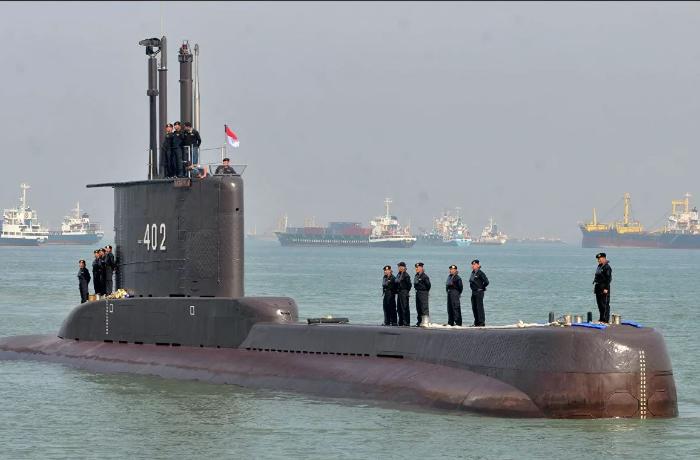
Rescue teams searching for a missing Indonesian naval submarine have recovered debris, indicating that the vessel with a crew of 53 has sunk, a military chief said.
Admiral Yudo Margono, the chief of staff, said rescuers found several items from KRI Nanggala 402, including parts of a torpedo straightener, a grease bottle believed to be used to oil the periscope, and prayer rugs.
“With the authentic evidence we found believed to be from the submarine, we have now moved from the ‘sub miss’ phase to ‘sub sunk’,” Margono said.
Indonesia had considered the submarine, which disappeared on Thursday off the coast of Bali, as missing. It now declares the submarine as officially sunk with no hope of finding survivors.
Officials said the oxygen supply for the vessel’s crew would have run out early on Saturday.
As hundreds of military personnel took part in a frantic hunt for the the submarine, authorities had said the German-built craft was equipped with enough oxygen for three days after losing power.
Search helicopters and ships had left Bali and a naval base in Java heading to the area on Friday where contact was lost with the 44-year-old vessel on Wednesday as it prepared to conduct a torpedo drill, with the head of the Indonesian submarine fleet aboard.
An American reconnaissance plane, P-8 Poseidon, landed early on Saturday to join the search, along with 20 Indonesian ships, a sonar-equipped Australian warship and four Indonesian aircraft.
An air force pilot said six tonnes of equipment had been flown to a base to help with the search, including underwater balloons to help lift a vessel.
The navy said it was investigating whether the submarine lost power during a dive and could not carry out emergency procedures as it descended to a depth of 600-700 metres, well beyond its survivable limits.
An object with “high magnetic force” was spotted “floating” at a depth of 50-100 metres, Margono had said, and an aerial search had spotted an oil spill near the submarine’s last location.
The diesel-electric powered submarine could withstand a depth of up to 500 metres but anything more could be fatal, a navy spokesperson, Julius Widjojono, said. The Bali Sea can reach depths of more than 1,500 metres.
“If the submarine is in a 700-metre sea trough, it will be difficult for them to survive because underwater pressure will cause cracks and ruptures of the steel hull,” defence expert Connie Rahakundini Bakrie said.
The submarine joined the Indonesian fleet in 1981, the defence ministry said, and underwent a refit in South Korea that was completed in 2012. It was said to be in good condition. (The Guardian)

 Tətbiqimizi yükləyə bilərsiniz
Tətbiqimizi yükləyə bilərsiniz

